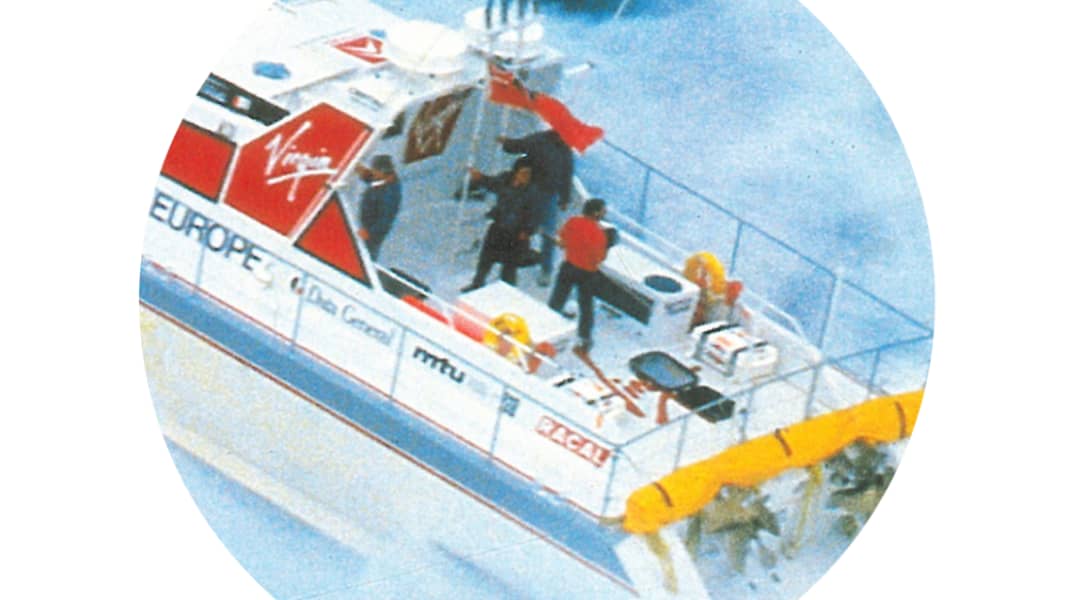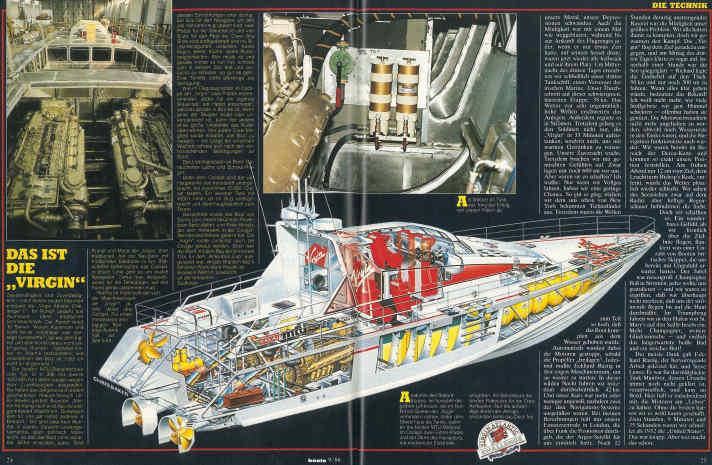

Richard Branson's success story is a modern fairy tale of a different kind: the resourceful Brit went from publishing his own school newspaper to becoming a billionaire entrepreneur. Now ennobled, his name is behind the Virgin empire with its music shops and airline. However, Branson is always looking for adventure and tackles records, for example in a hot-air balloon or on racing yachts.
But it all started with the "Virgin Atlantic Challenger": Branson wants to conquer the "Blue Riband" with an offshore racing boat in 1985 - even though the legendary trophy for the fastest Atlantic crossing is actually only awarded to passenger liners. But he is not interested in the trophy, the record alone is interesting.
The time to beat is three days, ten hours and 40 minutes: The record was set by the passenger liner "United
States" set the record back in 1952 - with an average speed of 35.59 knots. But the ambitious project failed at the first attempt: the "Virgin Atlantic Challenger" sank just 200 nautical miles from its destination in England, but the crew managed to save themselves.
As the word "give up" hardly features in Richard Branson's vocabulary, the second attempt is prepared immediately. The new boat was built using the experience already gained. Just one year later - in the summer of 1986 - the "Virgin Atlantic Challenger 2" was ready for launch. In record time, the
22.02 m long aluminium monohull was completed in record time, with two MTU diesels, each with 2000 hp and surface drives, providing the necessary speed for the three-day sprint.
The boat weighs ten tonnes and every unnecessary gram of ballast has been dispensed with. However, unlike its predecessor, this time at least there are recliners for the crew. Bunks? Not a chance. The maximum speed is 50 knots, the average at the beginning is "only" 47 knots - to build up a "time reserve".
The first tanker is already waiting off the coast of Nova Scotia, 12,000 litres of diesel are taken on board in just over an hour, and the journey continues. But the sea is getting rougher. While the speed barely decreases and the speedboat thunders from one wave crest to the next, the six-man crew feels every start like a hammer blow. Then, in the fog off Newfoundland, the second refuelling rendezvous, this time with an oil rig supply vessel. But the "stuff" is bad, white smoke billows out of the exhaust pipes: Water in the diesel!
The race against the stopwatch really begins now, everything has to be cleaned. Hardly possible at sea - but the German mechanic, specially seconded by MTU, performs the miracle. Refuel again, on we go! More fog, then the darkness of the night; those who get a wink of sleep are lucky. The aircraft now have to be stopped every hour to change the fuel filters, but the supply is running low. An aeroplane drops supplies.
It's getting close at the end, 600 nautical miles to go. Rain sets in, two of the three navigation systems fail. Then the destination - the Bishop Rock lighthouse and the Isles of Scilly! And the time? "We were two hours, nine minutes and 35 seconds faster than the United States," writes BOOTE employee Dag Pike, who was on board as navigator. "That was close. But what does it matter?"
